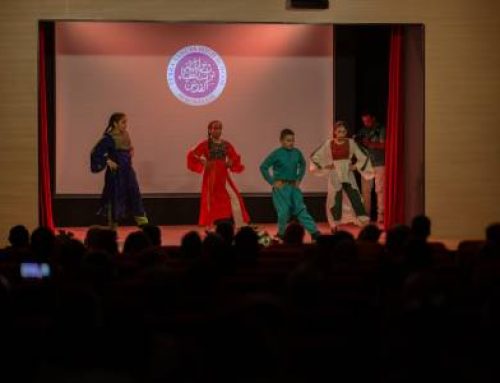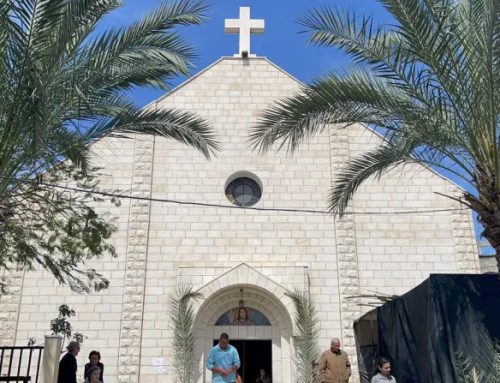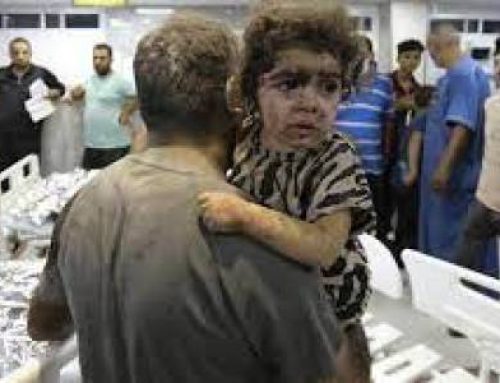
1. For years we’ve gathered evidence on the case of the Cremisan Valley in Beit Jala, and seen the people come to the place every Friday, accompanied by the parish pastor, Father Ibrahim Shomali, to offer the Holy Mass, and at the same time to express their rejection of the Wall construction. When did the case begin?
In 2003, the Israeli Defense Ministry declared its intention to build a separation wall on the grounds of the Cremisan Valley in Beit Jala, on the pretext of security. In 2006, three years later, when the project was announced and began to take shape, some families in Beit Jala, the property owners, supported by the Municipality of Beit Jala, introduced a legal protest to the Court of Peace in Tel Aviv, which is charged with examining cases relating to the expropriation of the lands within the borders of Israel. Israel in fact considers the Cremisan Valley as part of the municipal boundaries of Jerusalem because these lands were annexed after the war of June 1967 – simply to expand the area of Jerusalem. Therefore the Convent of the Salesians is regarded by Israel as part of Jerusalem and Beit Jala. But for the Salesian Monastery, located near the Convent of the Salesians, in particular Cremisan itself, only half of its land was annexed to the Municipality of Jerusalem in 1967, the other half remaining within the territories of the West Bank, particularly in Zone C.
In 2010, aware of the anomaly of the Israeli plan, the Salesians turned to Saint Yves Society to represent them before the Court. The position of the Sisters is very clear: they oppose the construction of the wall, and their message certainly reached the Israeli army. For their part, the army asked the Sisters to submit a list with the names of workers, employees, and the students who live within the perimeter of the school which they run for the benefit of children The army at that time wanted to annex the Salesian Monastery, along with the Salesian Convent, behind the Wall, and later build a gate that would allow workers, employees and students access to the school in the morning and come out in the afternoon. The sisters stood up against this ‘solution’, convinced that such a step would likely to put the children’s safety at risk. Therefore we decided, on behalf of the Sisters, to turn to the Israeli Ministry of Defense and Senior Legal Counsel. Meanwhile, the parents of the students thought of withdrawing their children from school if the army decided to carry out the project.
In 2010, our request, stating our opposition to the construction of the wall, to the Court of Peace in Tel Aviv was accepted, at least according to the first plan. I say “the first” because the Ministry of Defence, subsequently, presented two other plans, hoping to obtain the approval of the Sisters. The second plan, also rejected by the Sisters, provides for the construction of the wall above the fence of the school itself. The third plan, still in force, involves the construction of the wall on the land below the road that connects the two monasteries with the town of Beit Jala.
2. At what point have you arrived in this case?
The construction of the Wall is suspended at this time. Last year a petition was presented to the Supreme Court of Israel, to reverse the Court of Peace in Tel Aviv verdict, with which we were dissatisfied. The case has been updated several times. A few days ago, on January 29, 2014, a hearing was held during which three judges listened to the arguments presented by the parties. We are currently awaiting the final verdict.
3. What is your assessment of the hearing?
I would rate it positively. We were impressed by the concern of the judges who listened to both sides, especially to the arguments presented by the families. Most interesting were the comments made by a retired Israeli army colonel, Shaul Arieli, a member of the Commission for Peace and Security, who explained why it was preferable to build the wall below the settlement of Gilo, and therefore avoid the expropriation of private property, and also, according to him, ensure greater security for Israel.
4. Who participated in the hearing, and what arguments were presented by both parties?
It was attended by the opposing parties. On the one hand, the Municipality, the residents of Beit Jala, the Society of Saint Yves, acting on behalf of the Sisters, and Nihad Rashid, who represents the monks; on the other hand, Counsel for the Har Gilo settlement, a representative of the Attorney General. The Court decided to take the testimony of the Commission for Justice and Peace, made up of several officers and former military personnel. Also present were many supporters, including diplomats, friends, and representatives of the Latin Patriarchate – something that impressed the judges.
The lawyer of the Municipality of Beit Jala and the families, Ghayyath Nasser, placed emphasis on the source of income that these lands are for their owners, and the losses they might incur due to the construction of the Wall. He believes that the purpose behind the determination to build the wall implies a bigger annexation of vacant land. We understand things better if we remember that the route of the Wall is constantly changing, trying to avoid the buildings and grounds that include Palestinian villages to get their hands on the abandoned land.

The Israeli side presented its arguments, repeated and well known to all. From an economic point of view, the Attorney General believes that the ending the construction of the Wall would lead to a loss of NIS 80 million, paid for the preliminary infrastructure work to the construction of the wall. From the security viewpoint, the Attorney-General considers that the construction of the Wall, according to the proposal of the Commission, would reduce the area allocated to the Israeli army to address any potential security risks that could threaten the settlement (an area between 900 to 300 m). From a legal point of view, finally the Prosecutor asserts that no harm would be inflicted on the owners, who may gain access to their lands through the entrance gates, and other portals between the two convents, allowing the monks to provide religious services to the religious community.
5. Are you optimistic about the outcome of the next verdict?
We cannot predict anything. Personally, given the position of the judges during the hearing, I tend to say that this gave me a bit of hope. But do not forget that, in addition to the legal element, other considerations come into play.
Interview with Firas Abedrabbo





